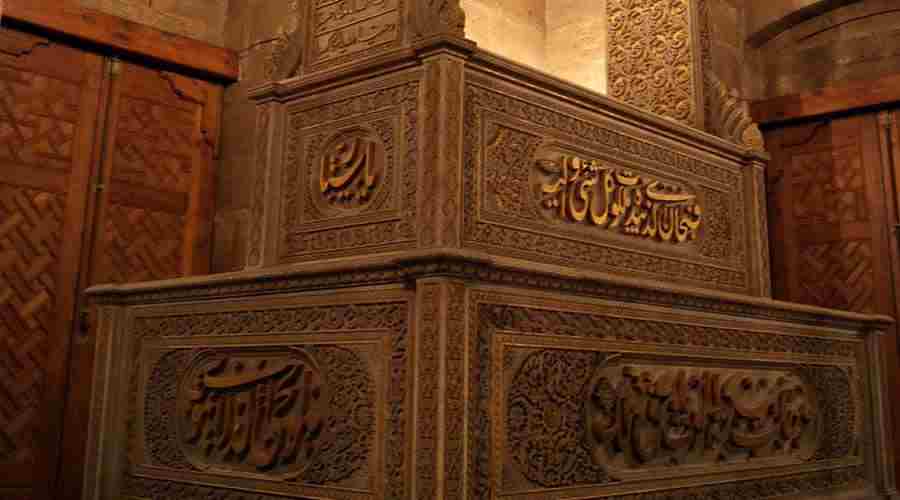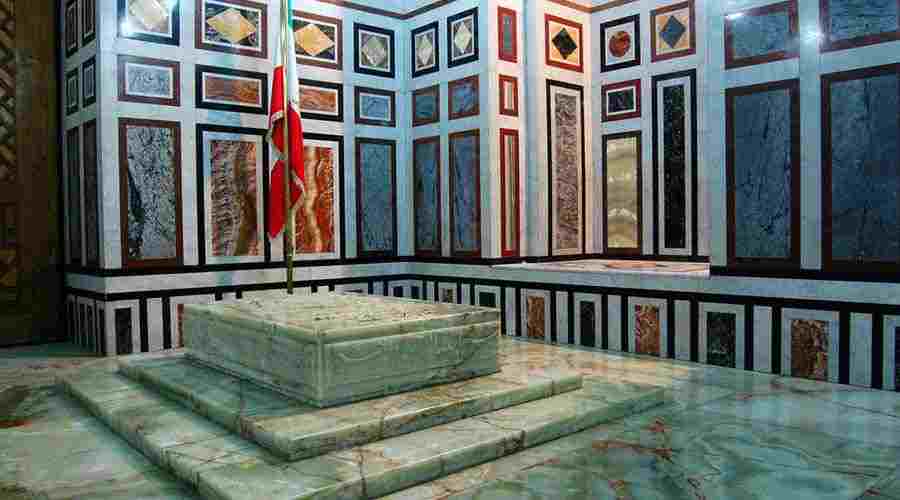Al Rifai mosque Cairo Egypt tours, booking, prices, reviews
Al Rifai mosque Cairo located next to Sultan Hassan in Salah El Din Square, near to The Citadel. In fact, Al Rifai mosque separated from the mosque of Sultan Hassan by a pedestrian street. Once you enter this lane you will overwhelmed by the huge structure of the Al Rifai Mosque. Khoshiar Hanem, the mother of Khedive Ismail, was the one who wanted the mosque built in 1869. In fact, the mosque’s construction took 40 years. It now contains the tombs of many Royal Family members in Egypt. It was the reason why Khoshiar Hanem wanted it built in the first place. She appointed Hussein Fahmy Pasha to be in charge of the mosque design. This enormous structure built upon the site of the former Rifa’i zawiya. It acquired and demolished by the Princess Khushiar.
Shaykh Ali Al Rifai was a medieval era Islamic saint. Zawiya was a pilgrimage site for locals. Those who believed that the tomb had mystical healing properties. Al Rifai Mosque in Cairo houses his tomb, along with that of Yehia Al Ansary, a companion of the prophet. In fact, the mosque is rectangular in shape, measuring some 6500 square meters in size. Moreover, 1767 square meters of this area reserved for praying. The rest of area is the mausoleum of the royal family. Furthermore, the mosque built in the Bahri Mamluk style which was popular in the 19th and 20th centuries. This style was like the European style of buildings at the time. Most of the materials imported from Europe. The building of the mosque in Cairo was part of a vast campaign by the 19th century rulers of Egypt.
Further details about Al Rifai Mosque Cairo:
Construction on the mosque moved along at a good pace. It was when, first Hussein Fahmy died and then in 1885, Khoshiar Hanem also died. She granted her wish of entombed here. And then in 1894, when her son Khedive Ismail also died, he entombed next to her. All this caused the process of building the mosque to stop for about twenty five years. They also completed the decorations of the mosque. In fact, this accomplished in 1911. Moreover, it opened for Friday prayer for the first time in 1912. The mosque came to represent a turning point in the cultural and political history of Cairo. Furthermore, the doorway of Al Rifai Mosque Cairo opens onto the narrow street between the two mosques. It had two huge marble columns to either side, with an unusual spiral design on their columns.
The decorations on the walls above the door and all around it are indeed fascinating. Even the ceiling of the entrance way is interesting. The designers seem to be articulate, paying attention to the smallest details. Moreover, the ceiling above this portal is wonderful. It is with golden Mamluk decorations. In fact, this was not its main entrance. Once inside Al Rifai Mosque in Cairo, one finds oneself in front of the mausoleum of Shaykh Ali Al Rifai. He is the head of the Al Rifai tariqa, or order of dervishes. Moreover, he was a saint during his lifetime. People still walk around his tomb, touching his hands to the sandalwood screen. In fact, they seek his blessed intercession in their lives.
More details about Al Rifai mosque Cairo:
Some people still come to this mausoleum to read a verse of Quran for the Shaykh. Reading the verses of “Fatha” for the dead a well known Islamic tradition. His tomb covered with fine pieces of wood engraved with marvelous decorations. What completed the amazing scene were the many flowers and roses. They placed on top of and all around his tomb. To the left of this tomb, behind the mashrabeyya screen, in other chambers lie the Tombs of King Fuad. In fact, he reigned from 1917 to 1936, and his mother along with the mausoleum of the Shah of Iran. It contains the tomb of Mohamed Reda El Bahlwy, who died in exile in South Africa in 1944. It returned to Iran after World War II. Part of the burial chamber is currently occupied by Reza Shah.
He is the son of Mohammed Reza Pahlavi. He died in Cairo in 1980. For Iranians who find themselves in this mausoleum there is poignancy for an emperor. He reigned for 37 years . It was during which Iran was an island of stability and progress in a volatile part of the world. The mausoleum is small but it has many amazing decorations. Colorful designs and golden verses of Quran are all about the room. Here is one of the most beautiful Mihrabs you will ever encounter. It decorated with marble and gold and shines as if it built just yesterday. The room also filled with flowers. The tomb itself is only a small step. It rises from the floor with the name of the Shah and his dates of birth and death.
Further details about Al Rifai Mosque Cairo:
The ceilings of Al Rifai Mosque chosen and decorated in a charming style. The gold for its gilding imported from Turkey between 1906 and 1912. Muslims paid great interest to the ceilings especially in mosques. It is because when a Muslim speaks to God, he supposed to look upwards towards the sky. Thus he looks at the ceiling. Most of the walls of the mosque covered with colorful marble. They are with different styles of the Mamluk style ornamentation. Here, nineteen different kinds of marble from seven different countries used. Pointed arches divide the royal mosque into three porticoes. Two marble columns, one white and the other dark green, stand at the sides of the great dome.
There are forty-four grand columns in all, and eighteen window grills. There are many doors in the walls. All doors made with the finest wood and decorated with pieces of expensive Abanos wood. Many of the walls have blue decorations highlighted by golden lines all around them. Lighting has always been an interesting element of mosque design. The lighting of Al Rifai Mosque well suited. It consists of huge ornate brass lanterns that hang from the ceiling. These lanterns are electric now. In the past, they used candles as a source of light. There are also many smaller lamps which hung from the ceiling. The Dikka in the mosque indeed is one of the most beautiful you will ever see. It is a raised platform from which the respondents (qadi) repeat the ritual postures of the Iman.
Further details about Al Rifai Mosque Cairo:
This rectangular Dikka made out of white, pure alabaster supported on eight columns. It adorned with Quran verses engraved using pure gold all around it. Beside the Dikka, there is the Quran table which known as a kursi. It indeed is a wonderful work of art in wood. It well designed and in good condition. The Minbar of the mosque decorated with mother of pearl. The door to the minbar made of wood and decorated with abanos wood and alabaster. The platform of the minbar like many other in Cairo, surmounted by a dome. This minbar is the most brilliant one can see in the Mamluk style. Unlike the minbar, the mihrab of Al Rifai mosque Cairo is rather plain and familiar. It is only a niche in the wall to show the direction of the qibla. There are five lines of decorations in Mihrab.
















